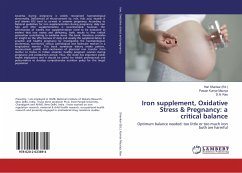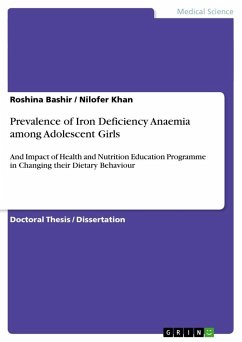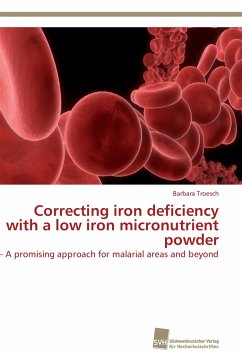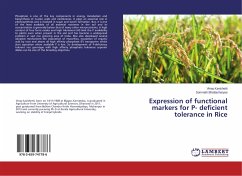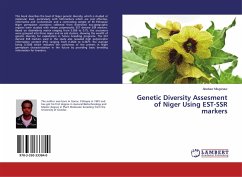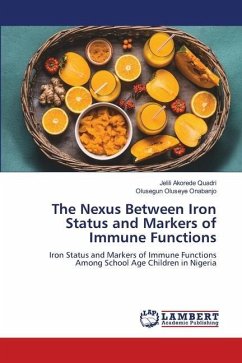
The Nexus Between Iron Status and Markers of Immune Functions
Iron Status and Markers of Immune Functions Among School Age Children in Nigeria
Versandfertig in 6-10 Tagen
29,99 €
inkl. MwSt.

PAYBACK Punkte
15 °P sammeln!
Iron deficiency (ID) is one of the most prevalent micronutrient deficiencies worldwide, that mostly results in adverse health outcomes, including anemia, poor immune function, delayed psychomotor development, impaired muscle function, and cognitive performance in children in the short and long term. This book thus established how iron deficiency compromised the immune status of school children. A multistage sampling was used to select the children and their blood samples were analyzed for biochemical [serum ferritin (SF), C-reactive protein (CRP), Heamoglobin (Hb), reticulocyte count] paramete...
Iron deficiency (ID) is one of the most prevalent micronutrient deficiencies worldwide, that mostly results in adverse health outcomes, including anemia, poor immune function, delayed psychomotor development, impaired muscle function, and cognitive performance in children in the short and long term. This book thus established how iron deficiency compromised the immune status of school children. A multistage sampling was used to select the children and their blood samples were analyzed for biochemical [serum ferritin (SF), C-reactive protein (CRP), Heamoglobin (Hb), reticulocyte count] parameters. Selected immune function markers, and parasitic infections were also measured using standard procedures. The prevalence of iron deficiency and anaemia in the children were high. It is rather pathetic to know that anaemia in many of the children were due to iron deficiency anaemia. Malaria and helmintes infection also showed a significant difference. CRP positively correlated with household size, Heamoglobin, serum ferritin and PCV. CD4 also positively correlated with mothers' age and education. A significant relationship exists between makers of iron status and infections in the children.



